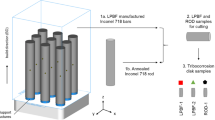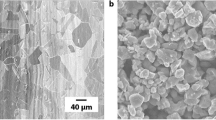Abstract
Ultra-high molecular weight polyethylene (UHMWPE) and Co-Cr alloy are still commonly used bearing materials for total disc replacement (TDR) as well as total joint replacement (TJR). Compared to TJR, in TDR, there are different articulating conditions such as higher contact pressure, shorter sliding distance, and less lubricant, unlike hip and knee joints. In this study, friction and wear phenomena between UHMWPE and Co-Cr alloy were characterized under the wide range of contact pressures including the extremely high contact pressure with limited amount of lubricant in lumbar TDR. All friction and wear tests were conducted by using a Pin-on-Disk type tribo-tester under normal contact pressures of 5, 10, 20, 40, 60 and 80MPa in the repeat pass rotational and the linear reciprocal sliding motions, respectively. UHMWPE cylindrical pins slid against Co-Cr alloy disks in three different kinds of dry, rarely and fully immersed lubricated conditions for friction tests and in a fully immersed lubricated condition for wear tests. For all lubricated conditions, mean coefficients of friction decreased as contact pressure increased. There were statistically significant differences in the mean coefficients of friction among six levels of contact pressures and among three kinds of lubricated conditions. The amount of wear linearly increased as number of sliding cycles increased for all contact pressures, and also it increased as the contact pressure increased. There were statistically significant differences in the wear rates of UHMWPE among six levels of contact pressures. Coefficients of friction of UHMWPE against Co-Cr alloy under very high contact pressure such as 40–80MPa in the lubricated condition were so low as to induce no clinical problem at the bearing surface. For reducing wear of UHMWPE component in TDR, it is necessary to decrease the contact pressure in design as much as possible.
Similar content being viewed by others
References
Errico, T. J., “Why a mechanical disc?” Spine J., Vol. 4, No. 6, pp. 151S–157S, 2004.
O’Beirne, J., O’Neill, D., Gallagher, J. and Williams, D. H., “Spinal fusion for back pain: a clinical and radiological review,” J. Spinal Disord., Vol. 5, No. 1, pp. 32–38, 1992.
Fritzell, P., Hagg, O., Wessberg, P. and Nordwall, A., “Chronic low back pain and fusion: a comparison of three surgical techniques: a prospective multicenter randomized study from the Swedish Lumbar spine study group,” Spine, Vol. 27, No. 11, pp. 1131–1141, 2002.
West, J. L., Bradford, D. S. and Ogilvie, J. W., “Results of spinal arthrodesis with pedicle screw-plate fixation,” J. Bone Joint Surg. Am., Vol. 73, No. 8, pp. 1179–1184, 1991.
Lee, C. K., “Accelerated degeneration of the segment adjacent to a lumbar fusion,” Spine, Vol. 13, No. 3, pp. 375–377, 1998.
Cinotti, G., David, T. and Postacchini, F., “Results of disc prosthesis after a minimum follow-up period of 2 years,” Spine, Vol. 21, No. 8, pp. 995–1000, 1996.
Huang, R. C., Girardi, F. P., Cammisa, F. P., Tropiano, P. and Marnay, T., “Long-term flexion-extension range of motion of the prodisc total disc replacement,” J. Spinal Disord. Tech., Vol. 16, No. 5, pp. 435–440, 2003.
Moumene, M. and Geisler, F. H., “Comparison of biomechanical function at ideal and varied surgical placement for two lumbar artificial disc implant designs: mobile-core versus fixed-core,” Spine, Vol. 32, No. 17, pp. 1840–1851, 2007.
Bono, C. M. and Garfin, S. R., “History and evolution of disc replacement,” Spine J., Vol. 4, No. 6, pp. 145S–150S, 2004.
Kurtz, S. M., “The UHMWPE handbook: ultra-high molecular weight polyethylene in total joint replacement, 2nd Edition,” Academic Press, 2004.
Harris, W. H., “The problem is osteolysis,” Clin. Orthop. Relat. Res., Vol. 311, pp. 46–53, 1995.
Amstutz, H. C., Campbell, P., Kossovsky, N. and Clarke, I. C., “Mechanism and clinical significance of wear debris-induced osteolysis,” Clin. Orthop. Relat. Res., Vol. 276, pp. 7–18, 1992.
Goldring, S. R., Clark, C. R. and Wright, T. M., “The problem in total joint arthroplasty: Aseptic loosening,” J. Bone Joint Surg. Am., Vol. 75, No. 6, pp. 799–801, 1993.
Gupta, S. K., Chu, A., Ranawat, A. S., Slamin, J. and Ranawat, C. S., “Osteolysis after total knee arthroplasty,” J. Arthroplasty, Vol. 22, No. 6, pp. 787–799, 2007.
Billi, F., Benya, P., Ebramzadeh, E., Campbell, P., Chan, F. and McKellop, H. A., “Metal wear particles: What we know, what we do not know, and why,” SAS J., Vol. 3, No. 4, pp. 133–142, 2009.
Kurtz, S. M., Peloza, J., Siskey, R. and Villarraga, M. L., “Analysis of retrieved polyethylene total disc replacement component,” Spine J., Vol. 5, No. 3, pp. 344–350, 2005.
Serhan, H. A., Dooris, A. P., Parsons, M. L., Ares, P. J. and Gabriel, S. M., “In vitro wear assessment of the Charité artificial disc according to ASTM recommendations,” Spine, Vol. 31, No. 17, pp. 1900–1910, 2006.
Kurtz, S. M., van Ooij, A., Ross, R., de Waal Malefijt, J., Peloza, J., Ciccarelli, L. and Villarraga, M. L., “Polyethylene wear and rim fracture in total disc arthroplasty,” Spine J., Vol. 7, No. 1, pp. 12–21, 2007.
Kurtz, S. M., Patwardhan, A., MacDonald, D., Ciccarelli, L., van Ooij, A., Lorenz, M., Zindrick, M., O’Leary, P., Isaza, J. and Ross, R., “What is the correlation of in vivo wear and damage patterns with in vitro TDR motion response?” Spine, Vol. 33, No. 5, pp. 481–489, 2008.
Kafer, W., Clessienne, C. B., Daxle, M., Kocak, T., Reichel, H. and Cakir, B., “Posterior component impingement after lumbar total disc replacement: a radiographic analysis of 66 ProDisc-L prostheses in 56 patients,” Spine, Vol. 33, No. 22, pp. 2444–2449, 2008.
Kurtz, S. M., Steinbeck, M., Ianuzzi, A., van Ooij, A., Punt, I. M., Isaza, J. and Ross, E. R. S., “Retrieval analysis of motion preserving spinal devices and periprosthetic tissues,” SAS J., Vol. 3, No. 4, pp. 161–177, 2009.
Harper, M. L., Dooris, A. and Paré, P. E., “The fundamentals of biotribology and its application to spine arthroplasty,” SAS J., Vol. 3, No. 4, pp. 125–132, 2009.
Saikko, V., “Wear and friction properties of prosthetic joint materials evaluated on a reciprocating pin-on-flat apparatus,” Wear, Vol. 166, No. 2, pp. 169–178, 1993.
Yao, J. Q., Laurent, M. P., Johnson, T. S., Blanchard, C. R. and Crowninshield, R. D., “The influences of lubricant and material on polymer/CoCr sliding friction,” Wear, Vol. 255, No. 1, pp. 780–784, 2003.
Gispert, M. P., Serro, A. P., Coląo, R. and Saramago, B., “Friction and wear mechanisms in hip prosthesis: Comparison of joint materials behavior in several lubricants,” Wear, Vol. 260, No. 1–2, pp. 149–158, 2006.
Tetreault, D. M. and Kennedy, F. E., “Friction and wear behavior of ultrahigh molecular weight polyethylene on Co-Cr AND Titanium alloys in dry and lubricated environments,” Wear, Vol. 133, No. 2, pp. 295–307, 1989.
Turell, M., Wang, A. and Bellare, A., “Quantification of the effect of cross-path motion on the wear rate of ultra-high molecular weight polyethylene,” Wear, Vol. 255, No. 2, pp. 1034–1039, 2003.
Shaheen, A. and Shepherd, D. E., “Lubrication regimes in lumbar total disc arthroplasty,” Proc. of the Inst. Mech. Eng. Part H, Vol. 221, No. 6, pp. 621–627, 2007.
Sutula, L. C., Collier, J. P., Saum, K. A., Currier, B. H., Currier, J. H., Sanford, W. M., Mayor, M. B., Wooding, R. E., Sperling, D. K., Williams, I. R., Kasprzak, D. J. and Surprenant, V. A., “The Otto Aufranc Award: Impact of gamma sterilization on clinical performance of polyethylene in the hip,” Clin. Orthop. Relat. Res., Vol. 319, pp. 28–40, 1995.
Premnath, V., Harris, W. H., Jasty, M. and Merrill, E. W., “Gamma sterilization of UHMWPE articular implants: an analysis of the oxidation problem,” Biomaterials, Vol. 17, No. 18, pp. 1741–1753, 1996.
Lee, K. Y. and Lee, K. H., “Wear of shelf-aged UHMWPE acetabular liners,” Wear, Vol. 225, No. 2, pp. 728–733, 1999.
Lee, K. Y., Kim, S. Y., Shin, D., Lee, S. J. and Kim, S. Y., “Wear of Retrieved UHMWPE hip liners,” Yonsei Medical J., Vol. 45, No. 2, pp. 293–299, 2004.
Chen, W. M., “Lumbar spinal adaptations in response to disc arthroplasty with total disc replacement: A finite element model analysis,” M.Sc. Thesis, Biomedical Engineering, Inje University, 2007.
Chen, W. M., Park, C. K., Lee, K. Y. and Lee, S. J., “In situ contact analysis of the prosthesis components of Prodisc-L in lumbar spine following total disc replacement,” Spine, Vol. 34, No. 20, pp. E716–E723, 2009.
Bragdon, C. R., O’Connor, D. O., Lowenstein, J. D., Jasty, M. and Syniuta, W. D., “The importance of multidirectional motion on the wear of polyethylene,” Proc. of the Inst. Mech. Eng. Part H, Vol. 210, No. 3, pp. 157–165, 1996.
Cornwall, G. B., Bryant, J. T. and Hansson, C. M., “The effect of kinematic conditions on the wear of ultra-high molecular weight polyethylene (UHMWPE) in orthopaedic bearing applications,” Proc. of the Inst. Mech. Eng. Part H, Vol. 215, No. 1, pp. 95–106, 2001.
Author information
Authors and Affiliations
Corresponding author
Rights and permissions
About this article
Cite this article
Kim, DW., Lee, KY., Jun, Y. et al. Friction and wear characteristics of UHMWPE against Co-Cr alloy under the wide range of contact pressures in lumbar total disc replacement. Int. J. Precis. Eng. Manuf. 12, 1111–1118 (2011). https://doi.org/10.1007/s12541-011-0148-y
Received:
Accepted:
Published:
Issue Date:
DOI: https://doi.org/10.1007/s12541-011-0148-y




